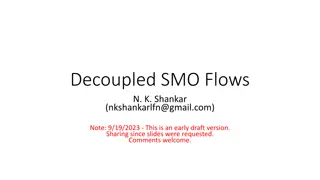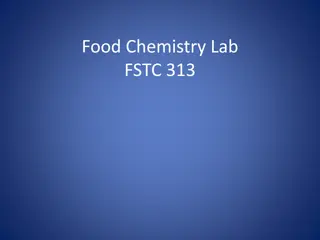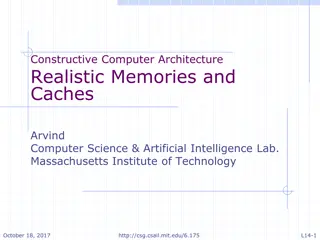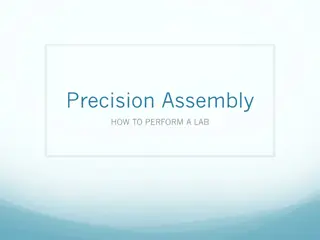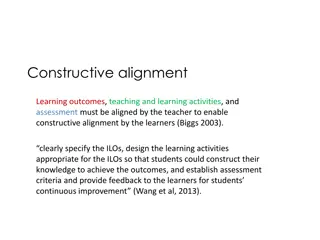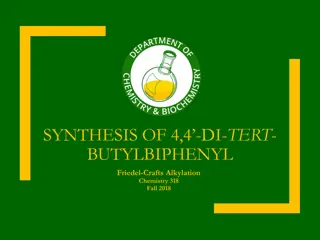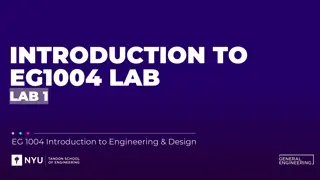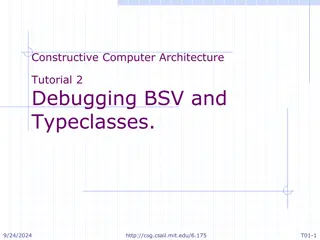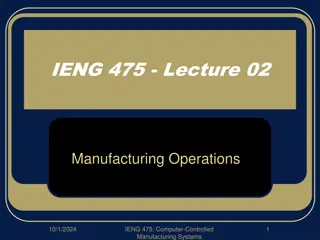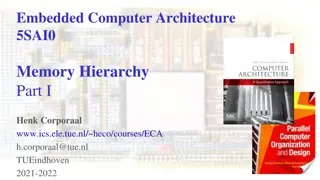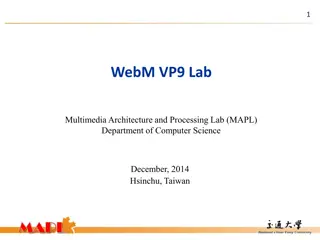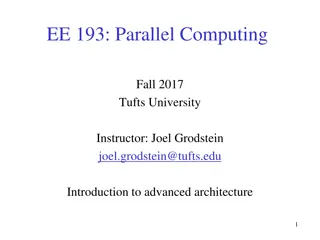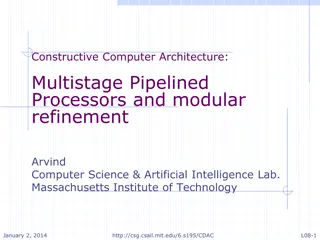Constructive Computer Architecture Lab 6 Discussion
Lab 6 involves creating a 6-stage pipelined processor from a 2-stage pipeline, emphasizing architectural details and interactions between stages. Learn about common bugs, diagnosing processor hangs, testing outcomes, and processor state manipulation in this informative tutorial.
Download Presentation

Please find below an Image/Link to download the presentation.
The content on the website is provided AS IS for your information and personal use only. It may not be sold, licensed, or shared on other websites without obtaining consent from the author.If you encounter any issues during the download, it is possible that the publisher has removed the file from their server.
You are allowed to download the files provided on this website for personal or commercial use, subject to the condition that they are used lawfully. All files are the property of their respective owners.
The content on the website is provided AS IS for your information and personal use only. It may not be sold, licensed, or shared on other websites without obtaining consent from the author.
E N D
Presentation Transcript
Constructive Computer Architecture Tutorial 6: Discussion for lab6 October 7, 2013 T05-1
Introduction Lab 6 involves creating a 6 stage pipelined processor from a 2 stage pipeline This requires a lot of attention to architectural details of the processor, especially at the points of interaction between the stages. October 7, 2013 T05-2
6 stage pipeline Register File Scoreboard IFetch Decode RFetch Exec Memory WB PC eEpoch IMem DMem October 7, 2013 T05-3
Bugs cheatseet My processor hangs: Does the cpu starts? Do you stall on the scoreboard? Do you do an infinite loop, because there is an actual infinite loop? Do you execute an illegal instruction? Do you fetch forever the same pc? October 7, 2013 T05-4
How do you know? Your processor hangs. How do you know why? Does the cpu starts? Do you stall on the scoreboard? Do you do an infinite loop, because there is an actual infinite loop? Do you execute an illegal instruction? Do you fetch forever the same pc? October 7, 2013 T05-5
My processor kind of work: it said PASSED. What does it mean? What lead my host computer to print PASSED? What lead my host computer to print FAILED? Remark: Your processor should also print a number of cycle that it took to do the test. October 7, 2013 T05-6
My processor kind of work: it said PASSED. The numbers for cycle should make sense: What can you tell me if the number of cycle printer for simple is: 200200 and the number of instructions 101101 ? October 7, 2013 T05-7
3 Details Processor State Poisoning Instructions ASAP Prediction Correction October 7, 2013 T05-8
Processor State The processor state is (PC, RFile, Mem) Instructions can be seen as functions of a processor state that return the new processor state addi(PC, RFile, Mem) = (PC+4, RFile , Mem) RFile is RFile updated with the result of the addi instruction The instruction memory can be seen as a function of PC that returns Instructions Imem: (PC) -> ( (PC, Rfile, Mem) -> (PC, RFile, Mem) ) October 7, 2013 T05-9
Processor State If your processor from lab is not working: Was an instruction executed on the wrong processor state? RAW hazards Not using the right PC in the execute stage Was the wrong instruction executed? A wrong path instruction from branch misprediction updated the processor state How do I know what should happen? October 7, 2013 T05-10
What is the right trace? You have a reference processor from previous labs. Run the code on the previous core, and look where it diverges. Is there a problem with that? You don t print the same stuff, they are not aligned cycle by cycle. October 7, 2013 T05-11
Processor State Register File Scoreboard IFetch Decode RFetch Exec Memory WB PC eEpoch IMem DMem Green blocks make up the processor state. All other state elements make sure the right processor state is used to compute instructions, and to make sure the right instructions are executed. October 7, 2013 T05-12
Poisoning Instructions Why poison? It s a way to mark that an instruction should be killed at a later stage. This mark could be as simple as using an invalid value in a maybe data type Instructions are poisoned when epochs don t match Why not kill in place? October 7, 2013 T05-13
Kill-In-Place Pipeline Register File Scoreboard IFetch Decode RFetch Exec Memory WB PC eEpoch IMem DMem Scoreboard entries need to be removed when instructions are killed. October 7, 2013 T05-14
Kill-In-Place Pipeline Register File Scoreboard IFetch Decode RFetch Exec Memory WB PC eEpoch IMem DMem Both Exec and WB try to call sb.remove(). This will cause Exec to conflict with WB. Also, the scoreboard implementation doesn t allow out-of-order removal. October 7, 2013 T05-15
Poisoning Pipeline Register File Scoreboard IFetch Decode RFetch Exec Poison Memory WB Kill PC eEpoch IMem DMem October 7, 2013 T05-16
Register stalling error: Make sure you don t drop instructions on the floor when you stall. E.g you always dequeue from the fifo. October 7, 2013 T05-17
Performance: < 1 IPC How does the following parameters influence the performance: Depth of the pipeline Efficiency of the branch predictor Number of branches/jump. Problem with firing several rule simultaneously. October 7, 2013 T05-18
6 stage pipeline Register File Scoreboard IFetch Decode RFetch Exec Memory WB PC eEpoch IMem DMem October 7, 2013 T05-19
ASAP Prediction Correction Different instructions that affect the program flow can be resolved at different times Absolute Jumps Decode Register Jumps RFetch Branches Exec You can save cycles on each misprediction by correcting the PC once you have computed what the next PC should have been. October 7, 2013 T05-20
Implementing Global Epoch States with EHRs Register File dEpoch[i] Scoreboard eEpoch[i] 6 5 4 3 2 1 IFetch Decode RFetch Exec Memory WB Decoding Executing Write Back PC [i] eEpoch [k] PC [k] PC [j] dEpoch[j] eEpoch[j] IMem DMem Make PC an EHR and have each pipeline stage redirect the PC directly October 7, 2013 T05-21
Important point of the cartoon picture No canonicalize rule. Only update direct to a pc ehr. Very few stage check the epoch: Only stages that updates the epochs and do redirection. Why is it not required for other stages? October 7, 2013 T05-22
Questions? October 7, 2013 T05-23



